“Is a happy, harmonious house renovation process even possible?”
How The Happy Boolo Project Expresses Community
While simply managing an extensive house renovation is a big job by itself, we were eager to challenge the typical paradigm of “house project = headache.” Instead we asked ourselves: what can we do to make this project a community-building effort? Below are ways we accomplished this.
Involving our local and global community by:
Reviewing our plans with our immediate neighbors over an afternoon of cake and tea. We wanted to make sure our neighbors were pleased with how the house would look as well as comfortable with the overall renovation process. We were thrilled when some of our neighbors gave us additional input that made our plans even better.
Enrolling two critical town councils — the Arlington Heights Design Commission and the Zoning Board of Appeals — into the project.
Thanks to our architect’s ability to take our vision of renovating the home in a way that maintains the historic charm of the neighborhood and design architectural plans accordingly, the Design Commission enthusiastically and quickly approved modernizing the home.
We also secured approval to extend beyond the average setback of the home to have a full front porch by sharing our desire for the home to truly benefit our community and serve as a place for neighbors to enjoy. Thanks to our amazing neighbors who also came to the hearing or wrote their endorsement for the front porch, we won unanimous approval from the Zoning Board of Appeals.
Seeking advice from various friends in the building trades and even our landlord (who also happens to be a builder).
Checking in with neighbors along the way to ensure that the renovation process is working for them in terms of noise level, parked cars, etc. Many of them are generously sending us pictures and videos of the process along the way.
Enrolling friends — artists, gardeners, and other creative spirits — to contribute their talents to our project.

Sharing vision with friends and neighbors
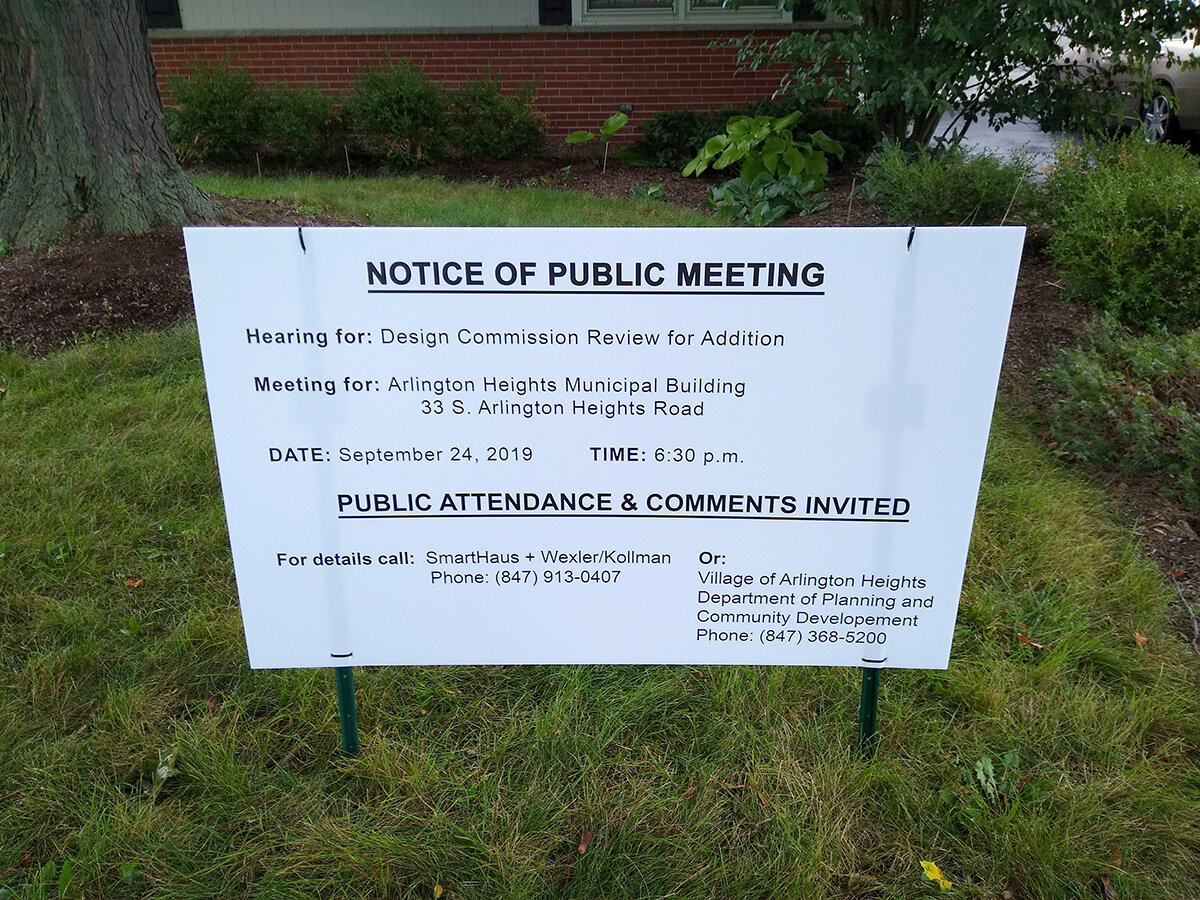
The first public hearing

Celebrating approval

Capturing Happy Boolos in the moment
Kicking Off the Project With Community
Before the renovation work began, we kicked off the project with an open house party. We invited neighbors, family, and friends to stop by and check out what our renovation would entail. We wanted to celebrate all the amazing people in our lives who have inspired this project. We were thrilled when our Mayor Tom Hayes and other Village officials joined us for the event, and we were really excited to receive coverage by The Daily Herald and Forbes.
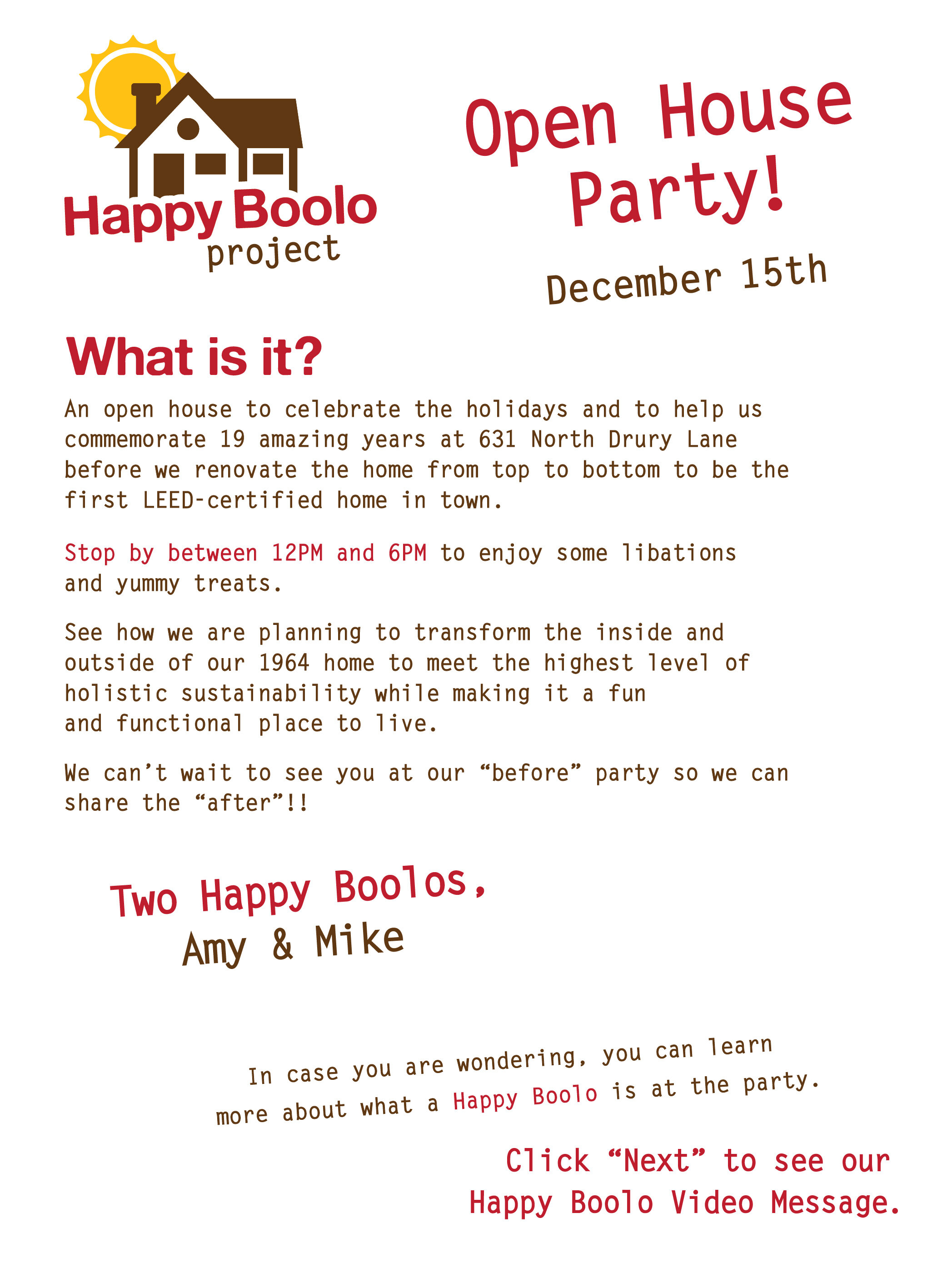
Getting the word out

Decorating
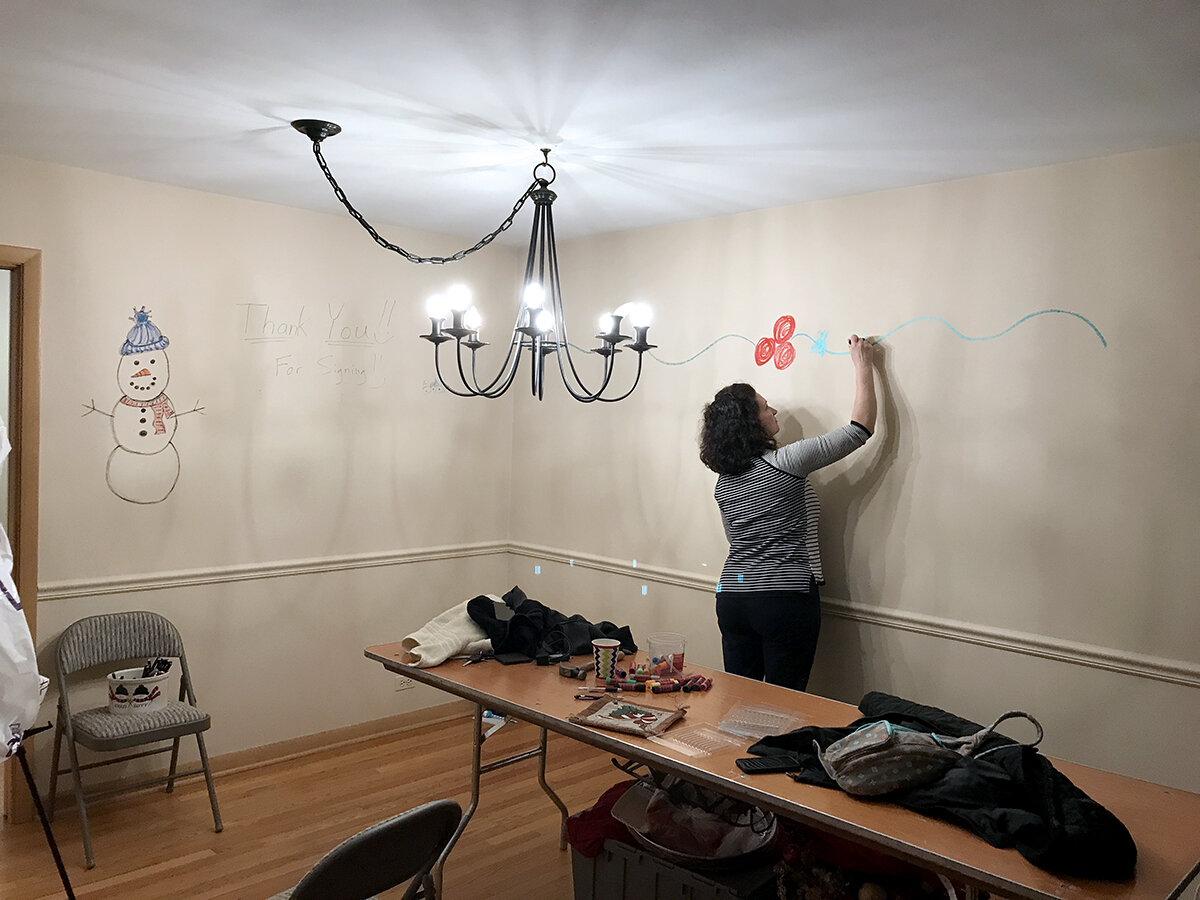
Starting the community wall

Happy Boolo nut factory

Kids’ party rules

Interviewed by the media

Friends

The Mayor

Neighbors
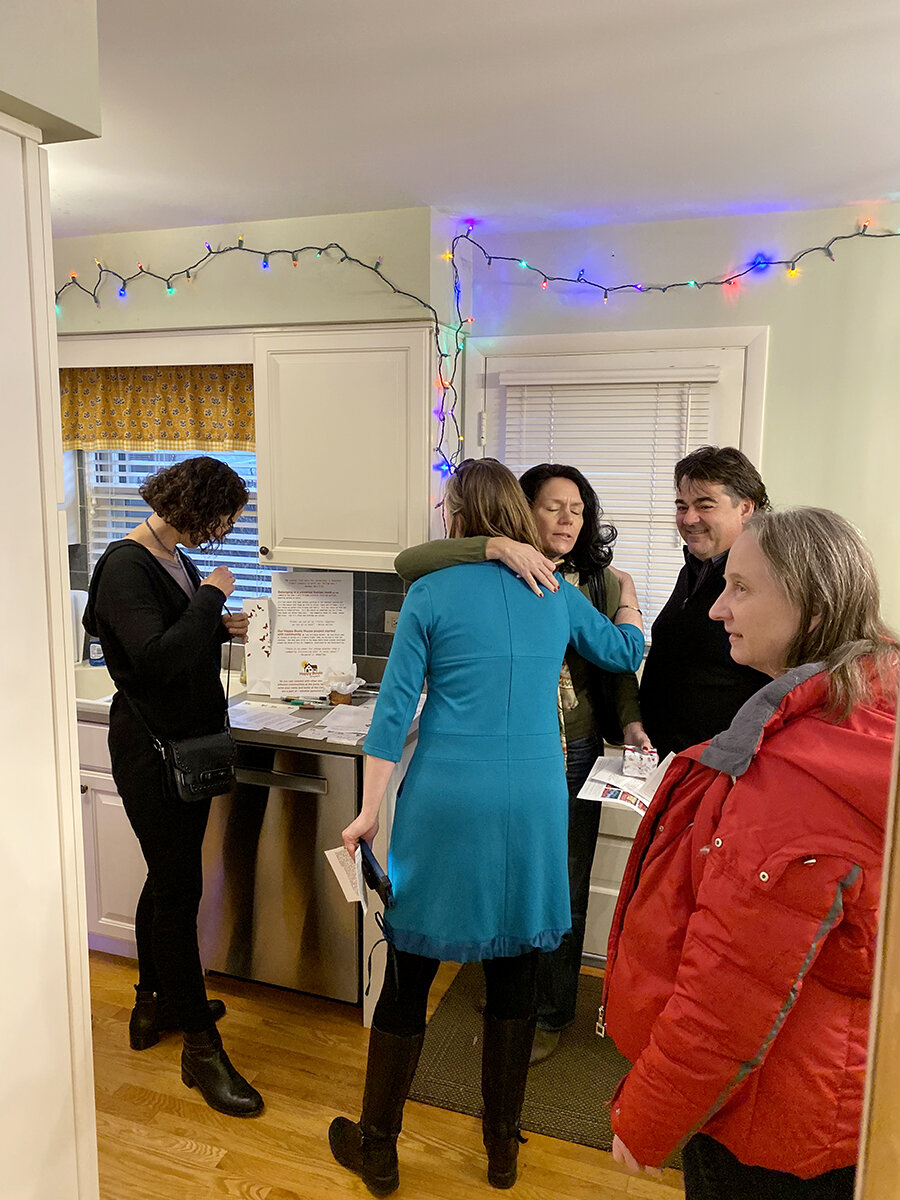
More friends & neighbors

Happy Boolo Project in cake

Catching up

Mike B & Mike K share plans

Environmental Commission Chair pays a visit

Enjoying the exhibits

More enjoying of the exhibits

Saying thank you nuttily

Community on the wall

There’s always an after party

…with lots of antics
Assembling a strong team of design experts
An architect who focuses on sustainable builds.
The same architect who also serves as our general contractor.
Interior designers skilled in form, function, and aesthetics.
A solar specialist who ensures we create the optimal solar PV system and helps us navigate tax credits.
Landscape gurus to plan out all the foundational aspects for our yard to become a high-yield garden retreat.
Eco-focused engineering team to ensure everything we do will be structurally sound.
Third party verifier to help us navigate the LEED process for a sustainable home.
Infusing the design process with hospitality
During the design phase (pre-pandemic of course), we hosted all meetings and working sessions with team members at our home and served homemade food. Whether an all-day meeting with our designer to finalize the kitchen layout or a meeting with our architect and designer to review final placements in our master bedroom, we shared some of our favorite dishes.
When given the choice of having our November 3rd Design Charrette (an all-day meeting to review the LEED process with the design team) at the architect’s office or at the 3rd party verifier’s office, we chose our home as the venue and planned for a homemade meal. This ensured that all of our experts were fully enrolled to our vision in the same way.

Brunch during kitchen design

Salmon caesar salad informs design decisions

Whimsical design requires whimsical food

Amy sharing the story

Mike continuing the story

Design Charrette Menu

Thyme Popovers

Food compels collaboration

Grilled cheese and sage yummies

Tempting Tarte Tatin
Enrolling the tradespeople into our vision
While we keep project communication between our architect-GC and the tradespeople on the job, we still make a point to meet each person or team contributing to the build process. We share the background of the project and let them know that their work is critical to our vision. Pre-pandemic, we shared homemade treats at the job site, and now we provide pizza lunches every so often. Once the project is complete, we look forward to celebrating with all the people who actually built the house.
Enrolling contractors at the beginning of the project.
Building the actual home structure to foster community
Designing the structure and flow of the common area on the main floor to accommodate friends, family, and neighbors gathering for dinners and celebrations once the renovation is complete.
Providing easy access through sliding glass doors to our backyard retreat where we can connect with neighbors.
Making the front of the home an inviting place for all to enter, a place for us to relax and share a casual “hello” as neighbors take an evening walk, and a gathering spot for social activities.
Ensuring the size of the home still maintains the character of the neighborhood.

Making food with others...
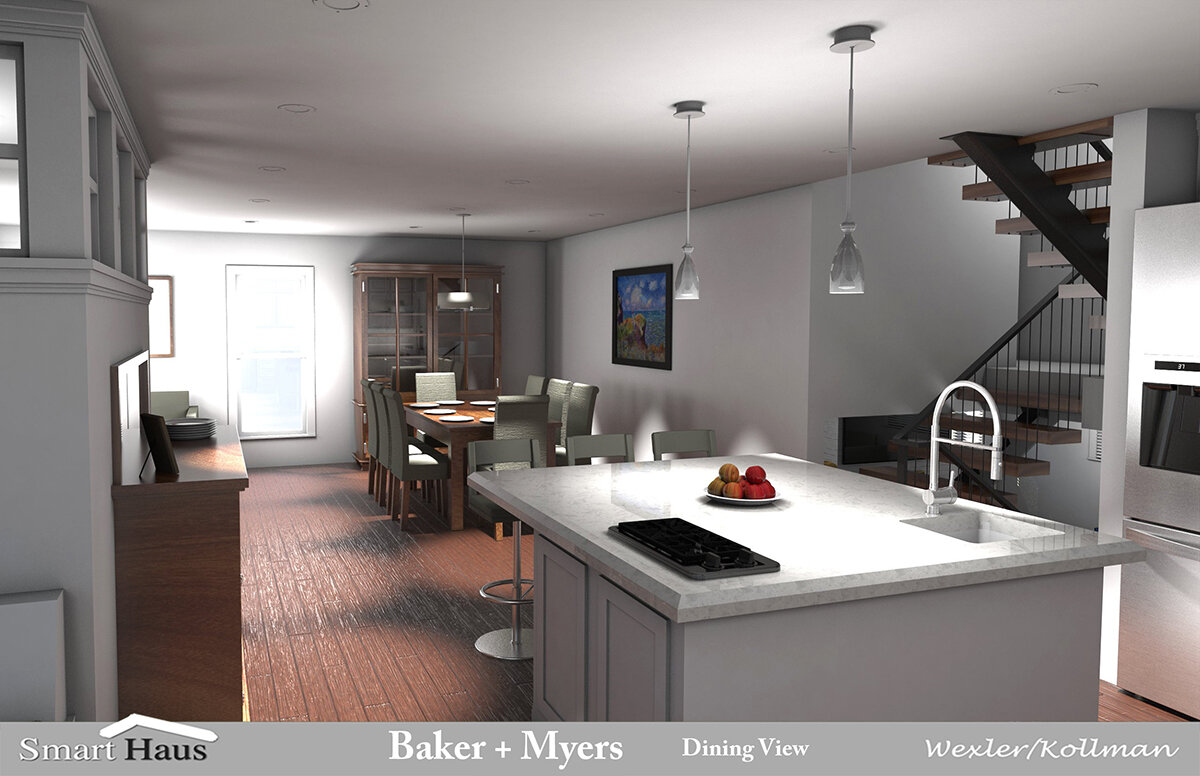
... and chatting
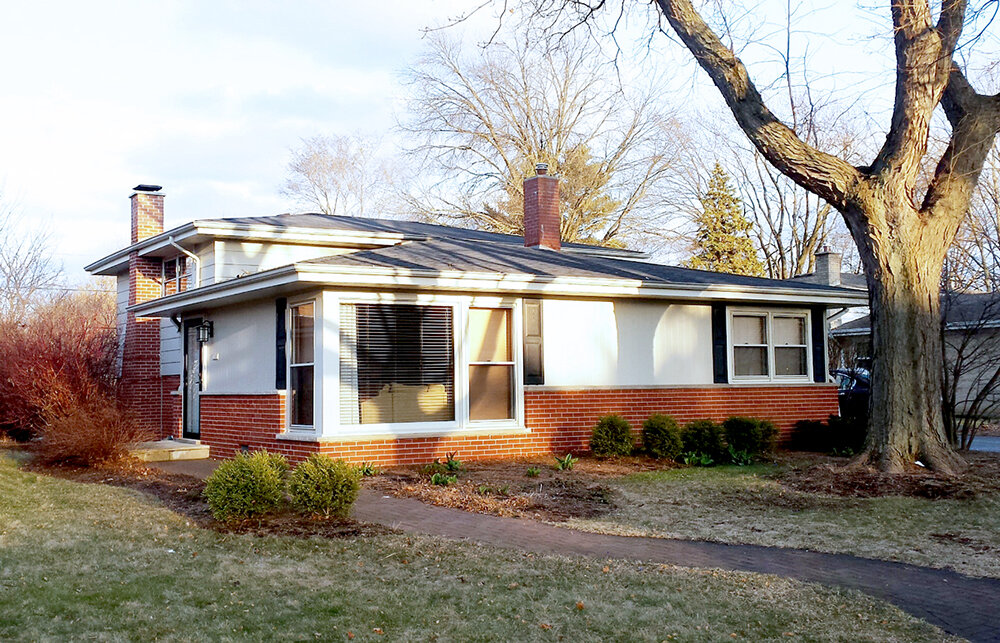
Original “front” door
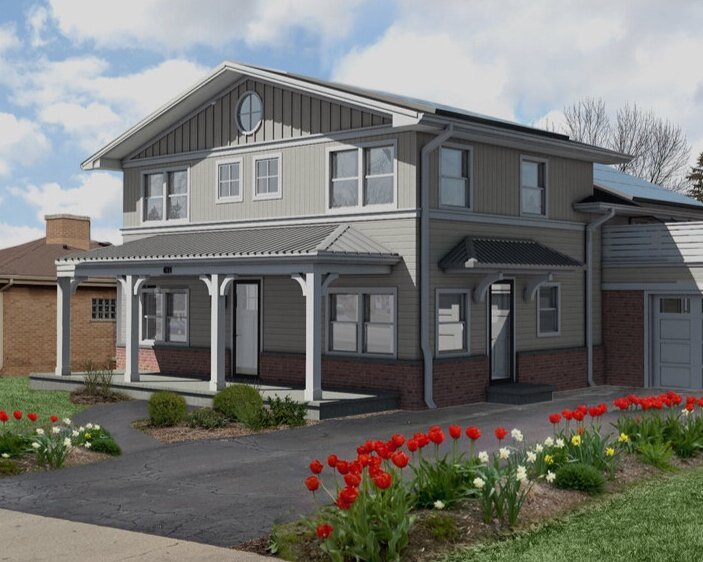
Welcome!

Easy gatherings
We hope our Happy Boolo home can enhance our already strong local community and serve as a meaningful gathering place to talk, share, and learn. We also hope that it inspires others to think about ways they can build stronger community in their own world.


